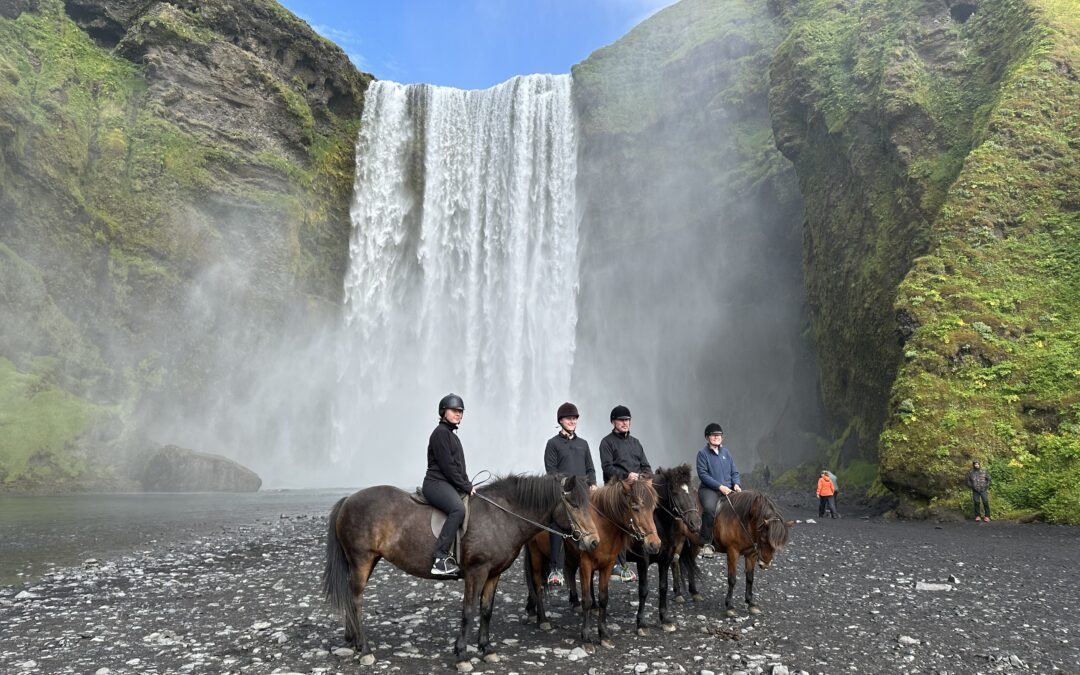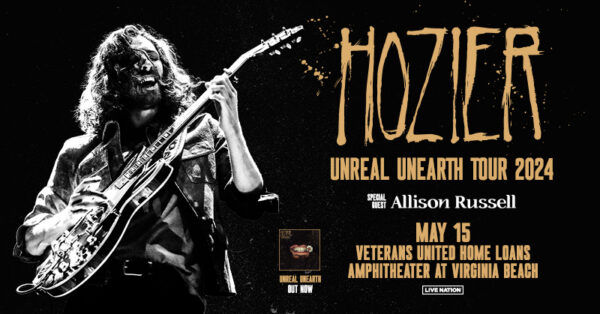(A horse riding tour stops for a photo-op at Skogafoss in southern Iceland)
By Jeff Maisey
PBS travel guru Rick Steves was motoring around Iceland the past July. Steves posted daily blogs from the road, proclaiming the country’s scenic highway to be the “ultimate roadtrip.”
Rick Steves explained to online readers his guidebook to Iceland is now his best seller and that he was in the Land of Fire & Ice to update the travel book to reflect a post-COVID view.
As it turned out, I was also in Iceland driving Route 1 the same week as Steves.
The Ring Road, as it is often called, circles the island nation, connecting many of the natural sightseeing highlights over 821 miles in length.
From Keflavik Airport, I rented a mid-size SUV from Blue Car with easy check-in and the all-inclusive, no-worries insurance package that covers potential damage from dents, scratches, rocks, and volcanic ash.
As the main road in Iceland, Route 1 is a simple two-way paved. It is important for the driver to pay attention at all times for several reasons: the road is narrow by American standards, traffic is on-coming, sheep sometime wander onto the pavement, rocks from cliffs and mountainsides can tumble down, and most notably, the road is elevated with almost no shoulder and few guardrails. Single-lane bridges are also worthy of attention.
I’ve visited Iceland many times since the mid-1990s. Icelandair’s motto used to be “cheapest way to Europe” and I often took advantage of a one or two day stay in Reykjavik before connecting on a flight to my ultimate European destination.
This summer’s journey was my — and Lynn’s — first drive around the entire Ring Road, plus a a few diversions to northern peninsulas.
We had just a week available for our vacation so I mapped-out an intensive itinerary.
Traveling in Iceland during July is ideal for experiencing it dramatic, natural beauty. While there’s no opportunity to catch the Northern Lights, the flip-side is you have 22 hours of daylight, and if you’ve ever driven the rural, unlit Icelandic roads in the darkness of winter, you’ll appreciate seeing where you’re headed.
Upon arrival, we hit the road rolling in a counter clockwise direction. We took Route 41 towards the capitol city and then diverted to the very narrow Route 42 through dramatic, rugged volcanic territory with a stop to walk (on designated raised pathways) the Seltun Geothermal Area/Krysuvik. The smell of sulfur always turns my stomach due to the warm, rotten eggs-like scent. Still, the bubbling pools of steaming water and interesting surface colors is worth holding my nose for to observe.
From here, we took the coastal road and headed to Selfoss — one of the few towns with commercial activity — for a healthy soup and salad lunch at Vor.
From Selfoss, we picked up Route 1 towards our overnight destination, Vik.
The scenery all along the way is spectacular. We pulled off the road often to rub the noses of hairy, Icelandic horses, photograph a remote wooden church or two, gaze at the beauty of mountain after mountain, breathe-in the clean, chilly air, and marvel up-close at the power of our favorite waterfall, Skogafoss, where a scene from the TV series “Vikings” was filmed.
Then it was on to the black sand beach of Reynisfjara, where the surrounding countryside landscapes are covered in grass as green as Ireland’s vistas, and the whiteness of looming, gigantic glaciers are ever-present.
In Vik, we checked into our hotel and dined at Restaurant Sudur-Vik, an old wooded, two-story house specializing in exceptional Icelandic cuisine.
On numerous dining occasions, I ordered either fish stew or Arctic Char. The stew bares no resemblance to soup or what we call Brunswick Stew in America. The blend of white fishes and root vegetables is hearty and delicious. Arctic Char, as we learned, is a freshwater fish that resembles salmon, but features a more pleasing taste.
Some people have a misconception of Icelandic cuisine. Sure, sometimes you may find traditionally iconic items like Horse Tenderloin, Fermented Shark, or Sheep’s Head on a menu, but these specialties are mostly a thing of the past. Today’s Icelandic chefs and restauranteurs — even in the smallest villages — are modern and impressive.
From Vik, the landscapes became even more fascinating and ever-changing, from vast lava field covered in carpet-like moss to the Jokulsarion Glacier Lagoon, where icebergs calve off of Iceland’s largest glacier and then float in the cold, blue lagoon as the streaming water lures them towards the Atlantic Ocean — just across the bridged road. Do yourself a favor and book in advance either a dingy boat ride or amphibious vehicle ride in the lagoon.
Our second day ended in Hofn, which provided a memorable dinner at the historic Pakkhus, where I couldn’t resist the baked prime fillet of cod.
The most spectacular leg of our journey was the long drive from Hofn to Husavik. The Ring Road in eastern Iceland dramatically clung to the mountainsides overlooking — as in straight down the cliff — the ocean, with waves crashing on offshore rock formations. Interestingly, many of these high coastal roads had few guardrails, just yellow stick markers to indicate where the edge of road was. Admittedly, I maintained a tight grip on the steering wheel through these eastern fjords until becoming more relaxed as Route 1 headed inland. Roadsigns warned of crossing reindeer and elk, but we were not lucky enough to encounter these splendid creatures.
We found Husavik an enjoyable, quaint town for its dining and whale watching adventure aboard a wooden, masted schooner. I highly recommend the experience.
From Husavik, we drove to the village of Siglufjordur, once the herring capitol of the world. In the old days, this tiny, most northern inhabited town was only accessible by sea, save an old sheep herding road over the nearly impassable mountains.
Today, a trio of tunnels connects the villagers. The last tunnel is two miles long and — get this — only one lane. The primitive inside has no tiling, only the rock of the mountain and dripping water every so often. There are several spaced out pull-offs. If you spot headlights up ahead, the unwritten rule is no take a break and allow the other car to pass before moving forward. It’s dark with sporadic overhead lighting, but part of the adventure.
One of the most northern breweries in the world is in Siglufjordur — Seagull 67. It’s a family run operation inspired by American craft beer and housed in a rustic, former fish factory.
While in Siglufjordur, it’s worth visiting the Herring Era Museum, dining at Torgid, and staying the night at Siglo Hotel, located right on the water and surrounded by mountains pointing north to the Sea of Greenland.
Due to time constraints, we headed back to Reykjavik before fling home.
Iceland is more popular than ever with tourists and its unique, remote, and fascinating landscape, culture, dining, and people are authentically inspiring draws.
As a word of advice, book accommodations and rental vehicles in early January for summertime travel. These essentials are in limited supply and demand is high.
Also of note: You’ve probably read headlines of recent volcanic activity in southwestern Iceland, within close proximity to the airport. Always use caution when visiting these areas during an eruption.





